Smoke and ash descends on the Gila Valley
By Jon Johnson
MOUNT GRAHAM – Firefighters continue to battle against the Frye Fire as it continues to back down toward the cabins at Turkey Flat, burning less than three-quarters of a mile away as of Sunday morning.
The fire was listed Sunday at 45,154 acres with 45 percent containment. It has cost an estimated $16.8 million to fight the fire, which began by lighting June 7 at 2:45 p.m.
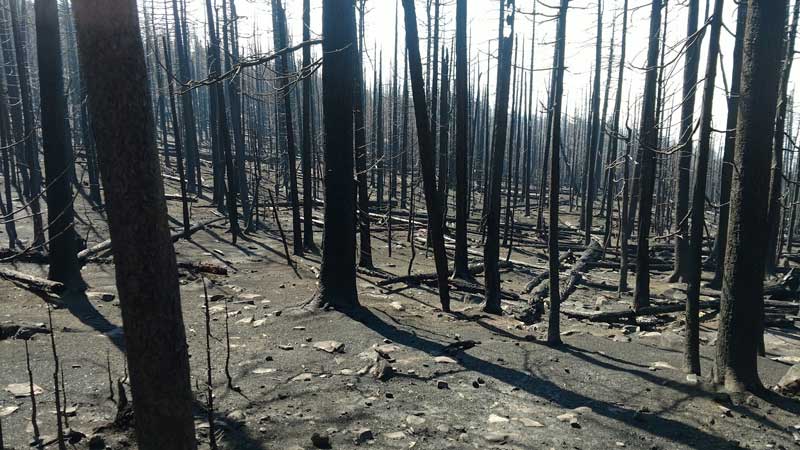
Contributed Photo/Courtesy LBTO J. Riedl: The Frye Fire has burned more than 45,000 acres on Mount Graham.
According to a news release, a Rapid Response Group of engines and equipment was staged at Noon Creek and on Highway 366 near Turkey Flat on Saturday night. The Turkey Flat area now has 50,000 gallons of water in portable storage tanks to run the three miles of sprinkler system set up and has an additional 60,000 gallons of water available.
Helicopters continued to drop water as the fire made its way through Pitchfork Canyon and into Wet Canyon, but had to move out of the area in the afternoon due to heavy smoke.
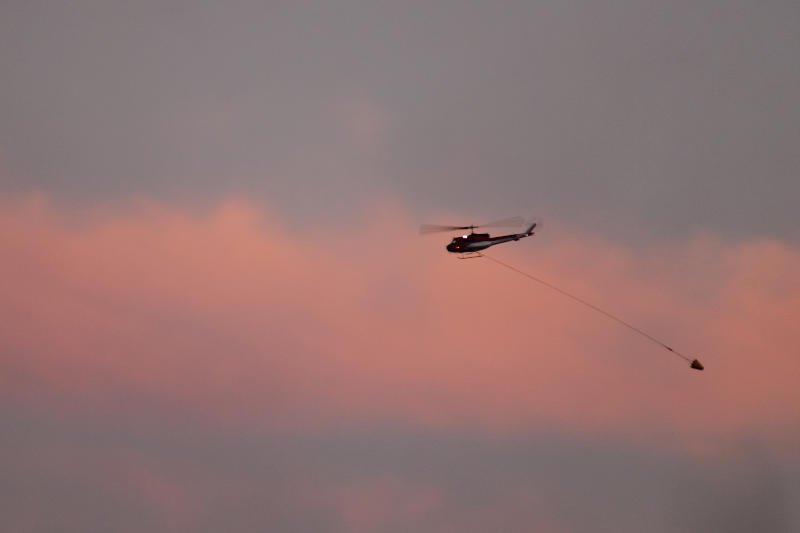
Eric Burk Photo/ Gila Valley Central: A helicopter, dangling a FAST bucket, returns to the Safford Airport after dropping it’s bucket full of water on the Frye Fire on the evening of June 14.
The smoke spread throughout the Gila Valley on Saturday and blew ash down onto residences in Thatcher and Safford. The current weather conditions are prime to put up smoke columns and then spread it into the Gila Valley.
Frye Fire public information officer Mike Cole said the helicopter activities, both performing aerial ignitions and water drops, have been invaluable in the battle as the fire approaches previous fire lines at Turkey Flat.
“It’s going to keep going that direction (to Turkey Flat),” Cole said. “There’s not really much of anything to stop it until it gets down to that fire line around the homes . . . The best case scenario is we keep it on the ground.”
The old Nuttall Complex Fire line is being utilized as a line of defense around the cabins, coupled with the sprinkler system, additional hand-dug fire lines and the removal of small vegetation and low-hanging branches.
Aerial ignitions took place in Wet Canyon on Saturday, to help reduce the fuel load as the fire approaches and keep it burning as a low-intensity ground fire instead of allowing it to get to the tree tops.
“We’re about as ready for it as we’ll be,” Cole said. “As long as it stays on the ground, we’ll let it come toward us at a slow pace.”
Slurry drop
During a community meeting June 28, Dale Larson questioned if a fire retardant slurry would be able to be dropped at the cabins at Turkey Flat if necessary like it was to save the Mount Graham International Observatory (MGIO) on June 18. To date, the only part of Mount Graham to receive a fire retardant slurry drop was the MGIO, and Larson questioned if that was the case because the Forest Service wouldn’t drop it anywhere else due to an environmental concern for the Mount Graham Snail. Larson said it wouldn’t make sense to not drop the retardant to save the snail “because, aren’t the snails going to be dead anyway if the fire comes through?”
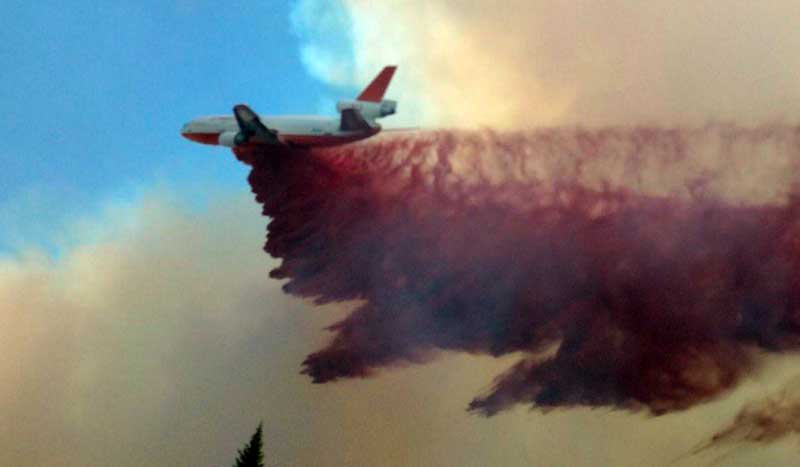
Contributed Photo/ Courtesy LBTO (K. Newton): An air tanker makes a fire retardant slurry drop next to the MGIO to help stop the fire and save the observatory June 18.
Safford District Fire Management Officer Everett Phillips skirted the question slightly and initially said the dropping retardant would depend on various factors. He then advised that if it became a necessity, the area would receive a fire retardant drop like the MGIO had.
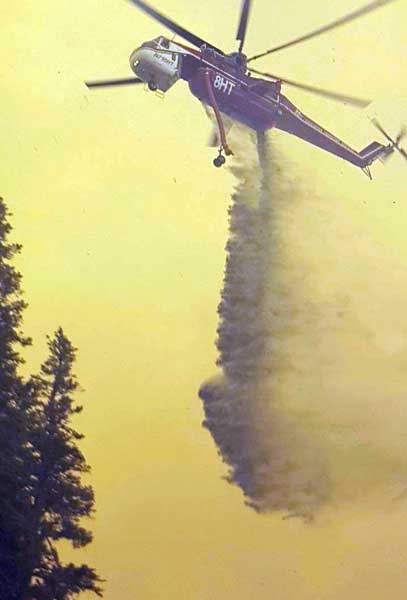
Contributed Photo/Courtesy Fort Grant Hand Crew: A Sky Crane helicopter drops a load of water on the Frye Fire.
“The Forest Service, we have a retardant avoidance study that was done three or four years ago nationwide, and it’s going to depend on exactly when and where that retardant is going to be used,” Phillips said. “But I would say I would give you a 100 percent guarantee if something is threatened at Turkey Flat, the permission will be given to use retardant.”
The most well-known animal in the Pinaleño Mountains is likely the Mount Graham red squirrel, which has endangered status. The squirrel’s population peaked in the 1990s at about 550 but decreased through habitat loss from the Nuttall Complex Fire in 2004 and other reasons, including insect infestations and poor cone crops. An annual count taken by the Arizona Game & Fish Department, U.S. Forest Service, U.S. Fish & Wildlife Service and the University of Arizona listed and estimated 263 squirrels on the mountain in January, 2016.
With the Frye Fire decimating parts of the squirrels’ habitat, that number is quite likely to be reduced even further.
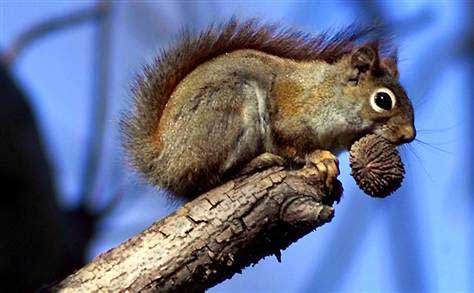
Mount Graham red squirrel
Retardant slurry drops have been used at multiple fires burning throughout Arizona this year, including the Lizard Fire, the Bowie Fire, the Goodwin Fire and more.
Hospital Flat, Riggs Lake
The fire continues its activity on the western side as well as helicopter drops attempt to keep it down on the ground, out of the tree tops at Hospital Flat and Riggs Lake areas.
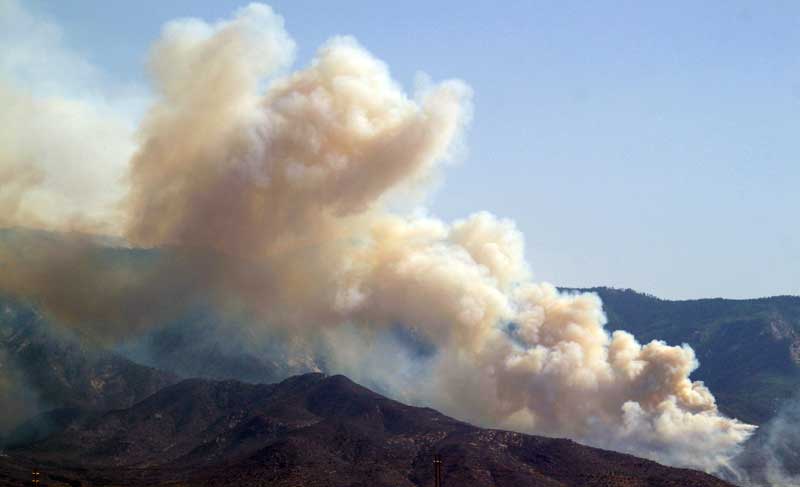
Jon Johnson Photo/Gila Valley Central: The Frye Fire’s western front continues to burn and smoke as helicopter drops continue to attempt to check its progression. This picture was taken June 22.
The fire made runs up Grant Creek and Hells Hole Creek, but they ended up burning back into the fire.
“The problem is on that south side is the sun is beaming on it all day and the lower you get the lower the humidity is,” Cole said. “You can’t guarantee you can keep it on the ground all the time . . . It’s still burning in a mosaic pattern.”
Crews also continue to mop up areas around the MGIO, Bible Camp and Old Columbine. Mount Graham remains closed to the public and the entire Coronado National Forest is under Stage 2 Fire Restrictions.

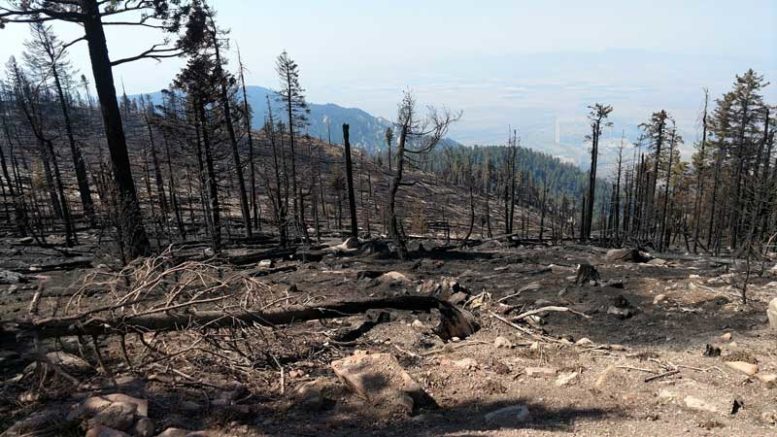






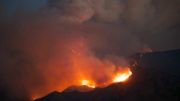
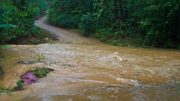

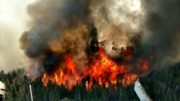

.jpg)